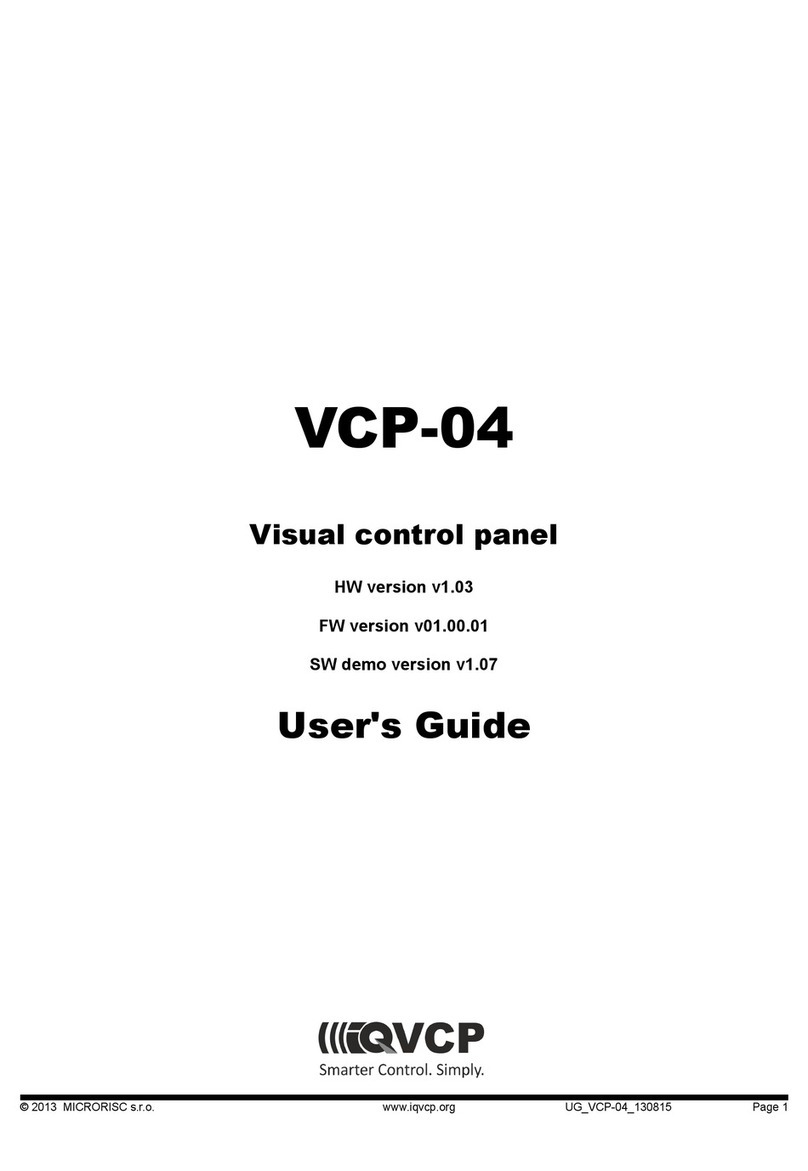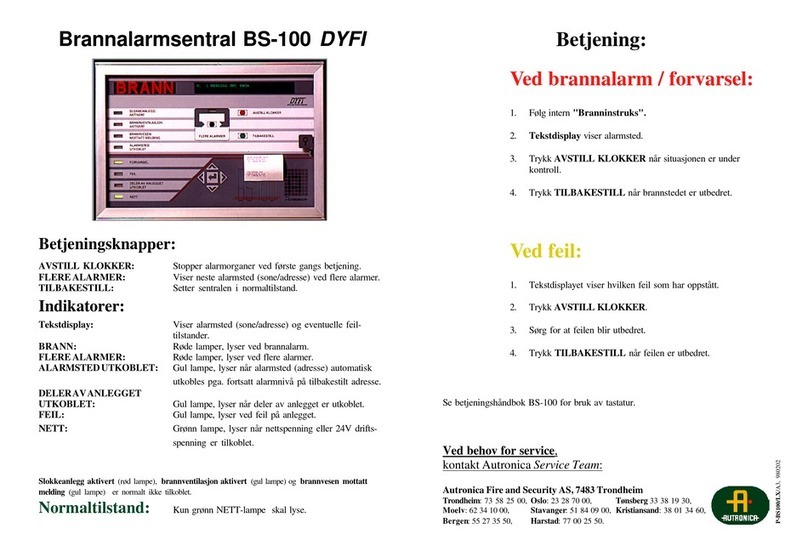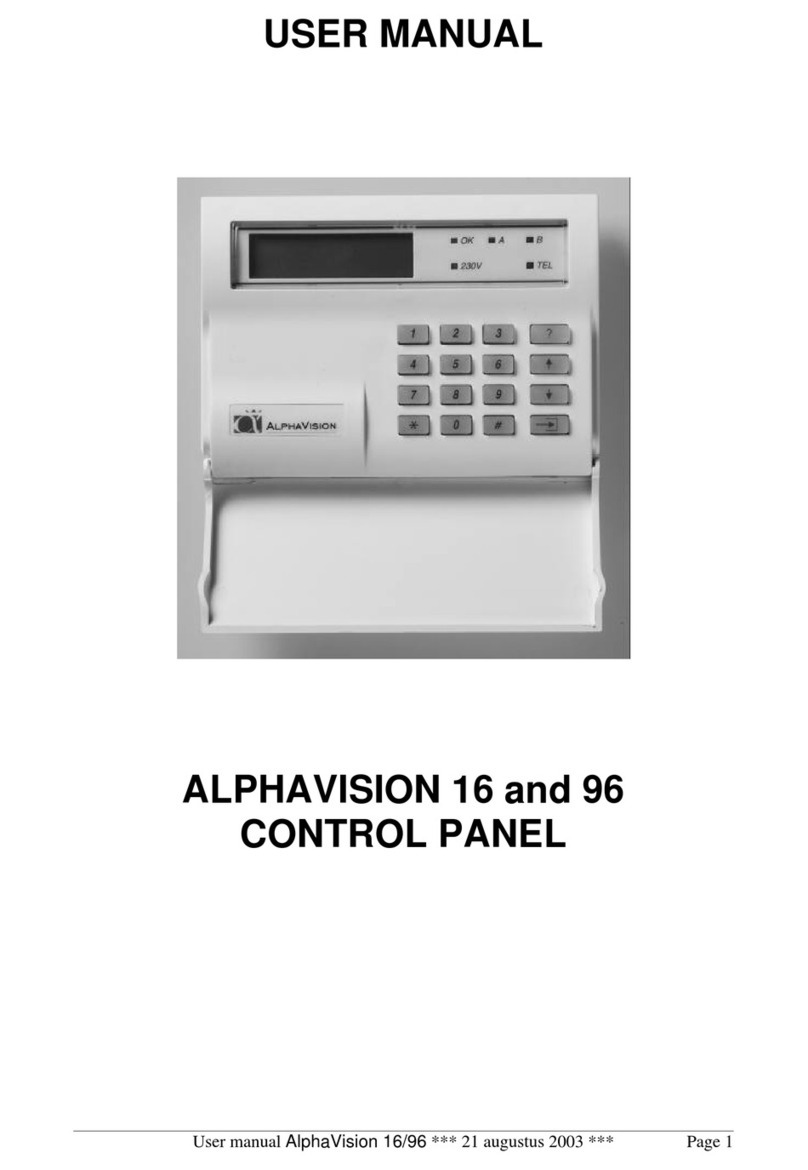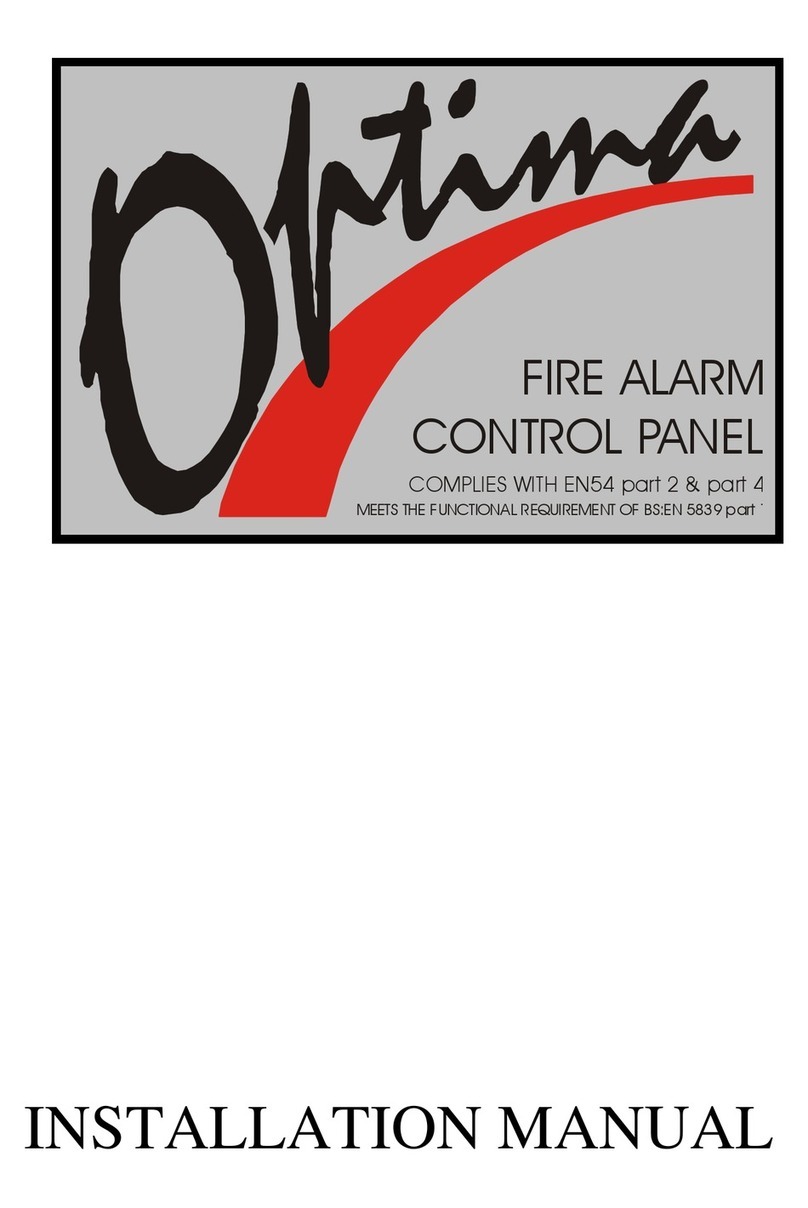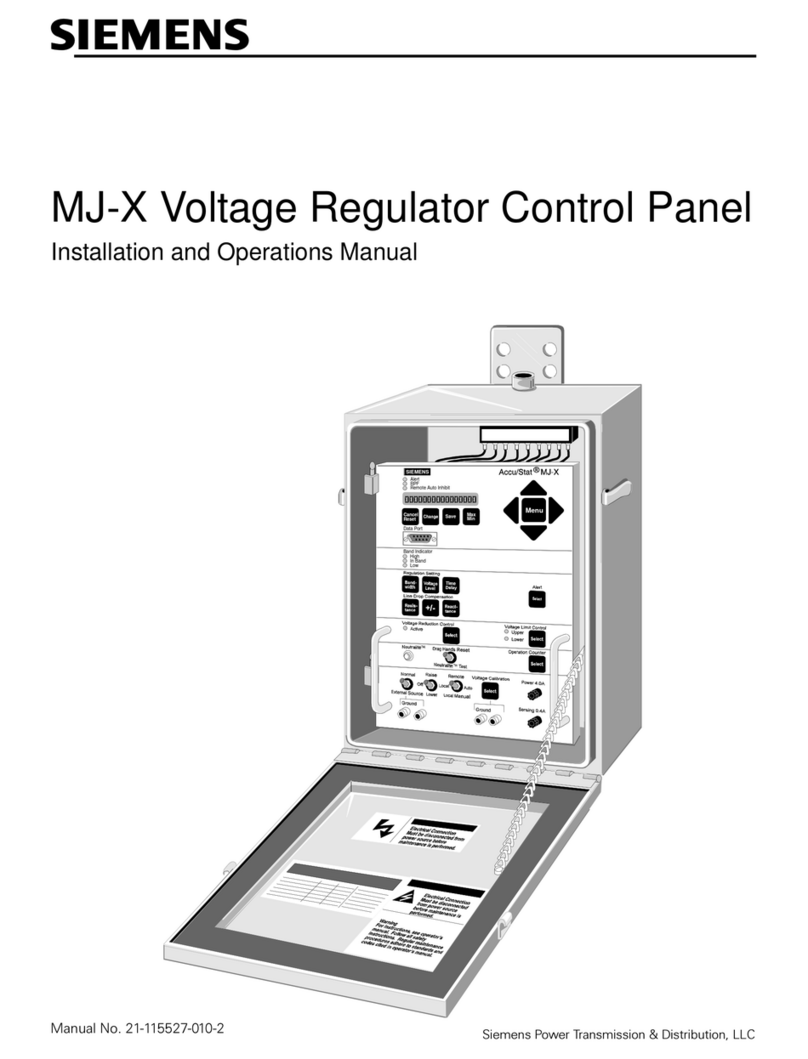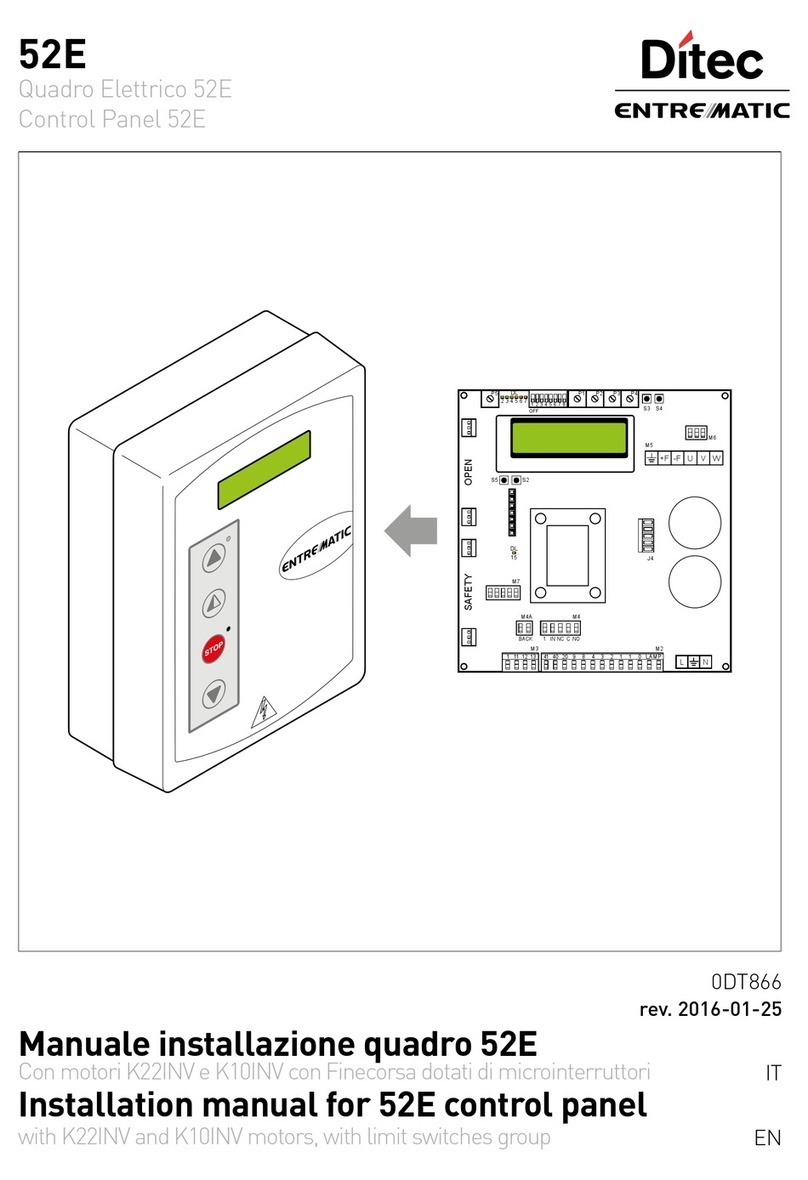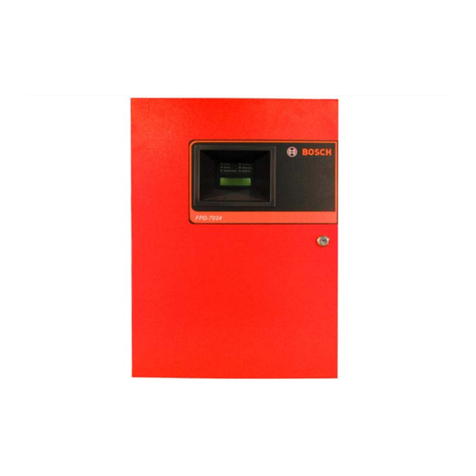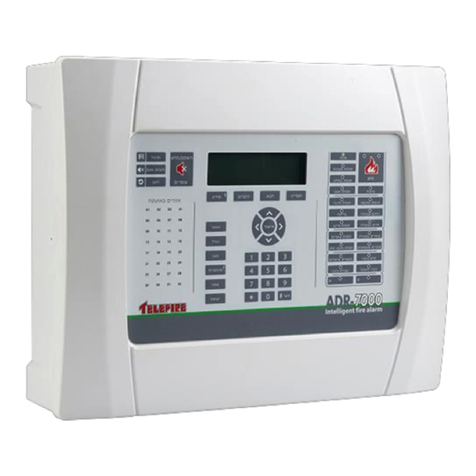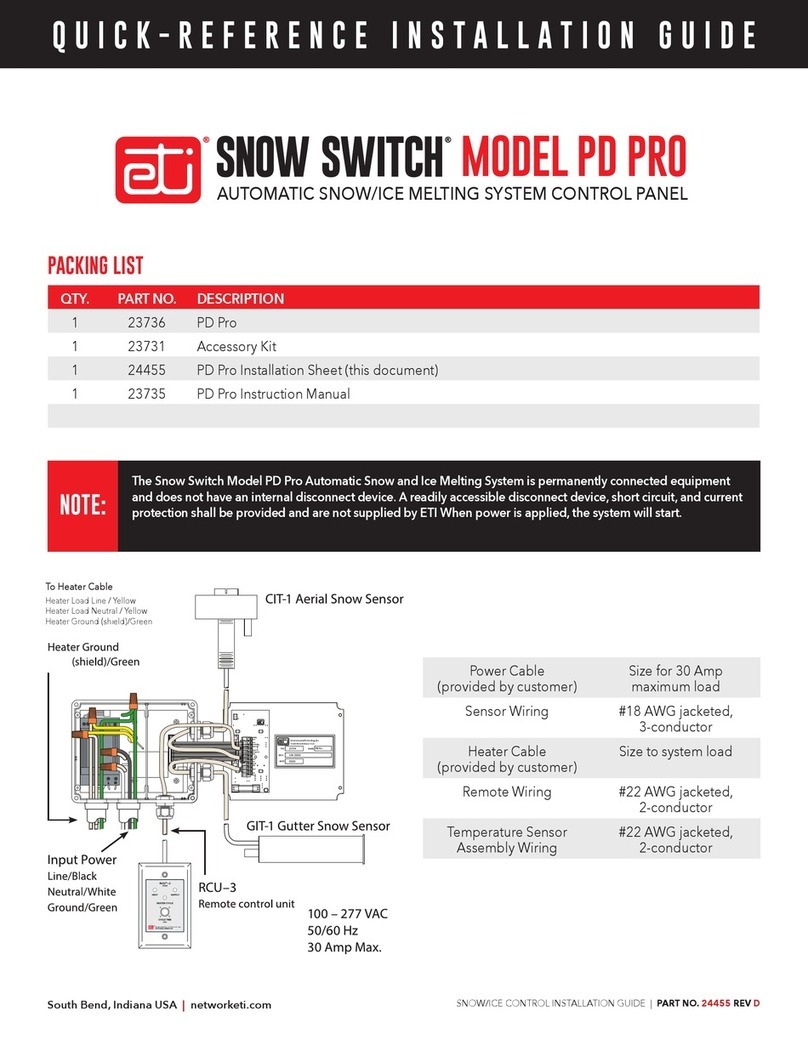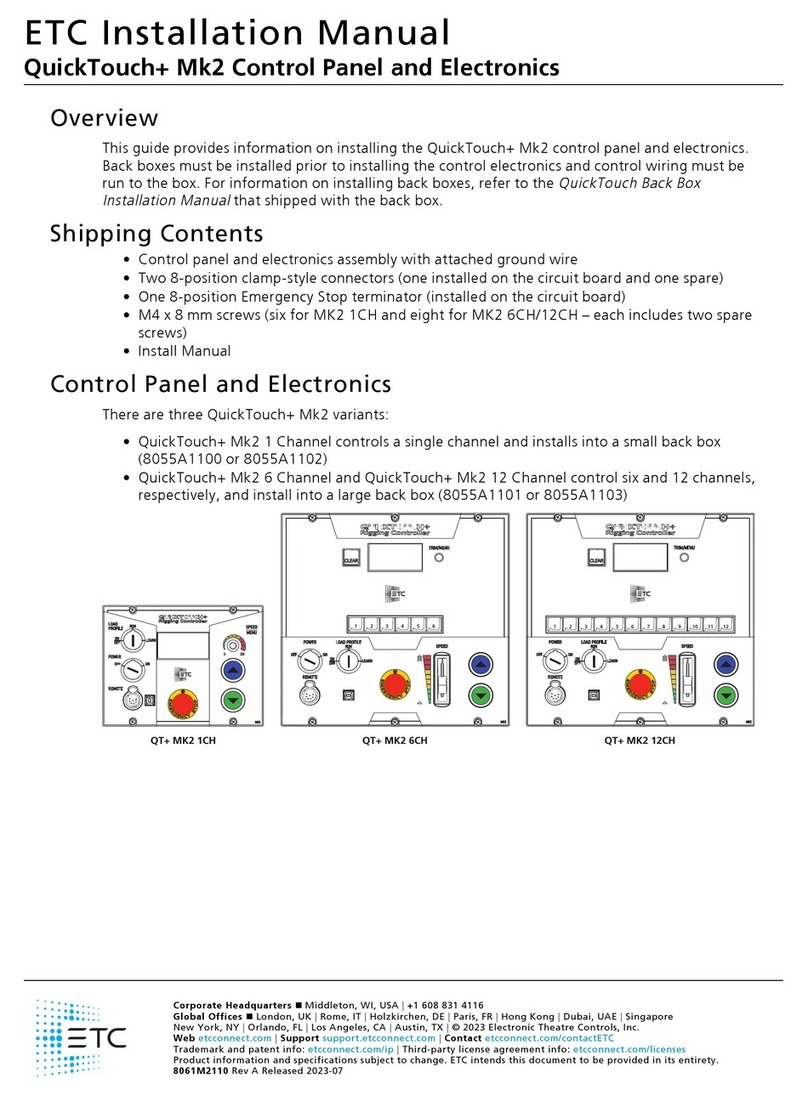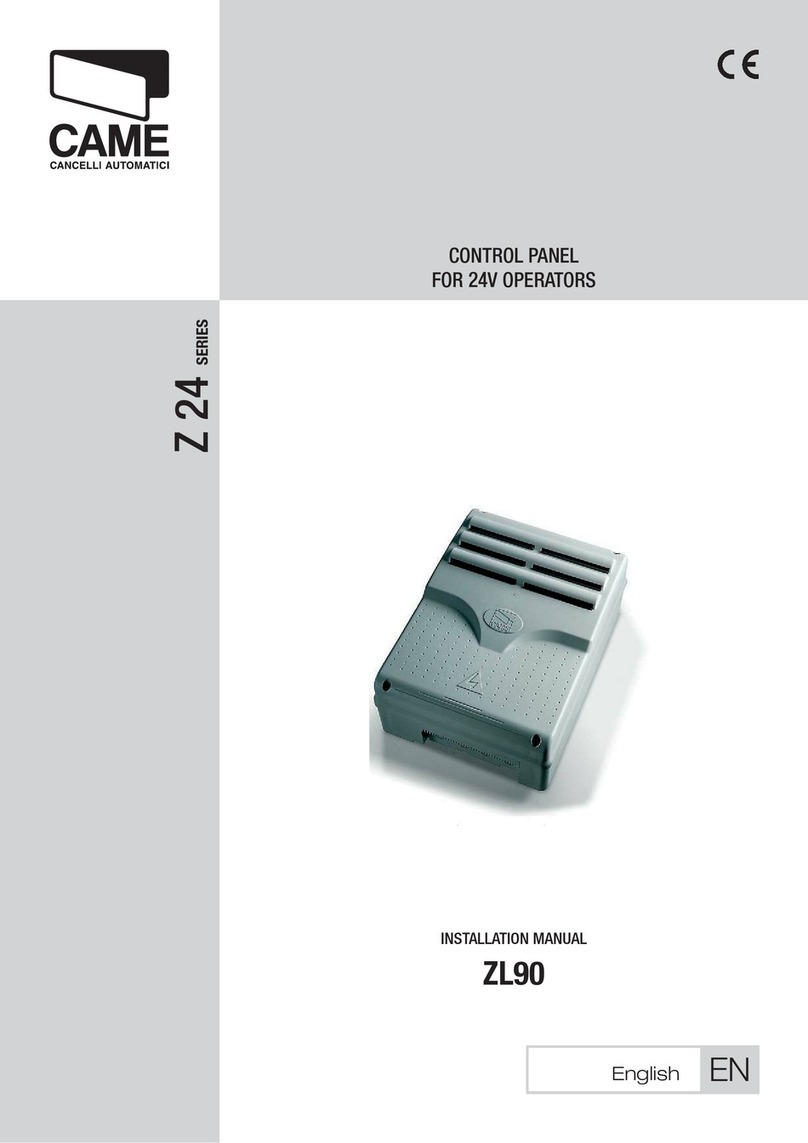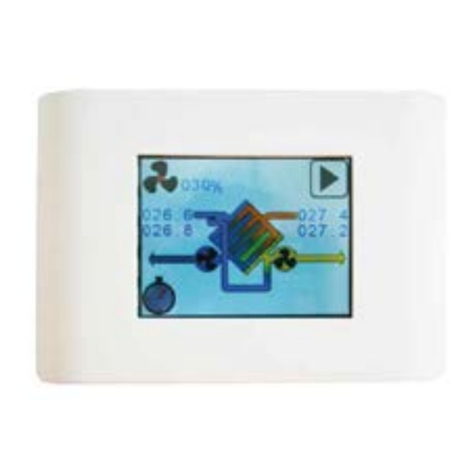Distech Controls LC-3 User manual

112018
PC-3
User Guide
© 2018 AbsolutAire, Inc.

1
Table of Contents
Page Title
2 Preface
3 Introduction
4 Operation
5 Menu Tree
9 Network Integration
Images
3 Figure 1 – Main Screen

2
Preface
The LC-3 Psychrometric Controls Package is a cost-effective system that
will control discharge conditions for installations that need discharge control
of temperature, de-humidification and/or humidification. All calculations are
performed internally so the user only needs to input their desired discharge
conditions. An option for airflow (CFM) monitoring and control is also
available.
For de-humidification the unit will cool the air to the desired dew point, then
heat it to the desired discharge temperature set point. This controls
package will support either a DX unit with an analog signal or a chilled
water valve for cooling. Modulated gas, modulated hot water/steam, or
electric heat sources can be utilized.
If a humidification package with re-heat is added, full control of discharge
conditions can be realized. This can be accomplished with evaporative
media or steam depending on the requirements of the facility with re-heat
being of any type listed above.
Airflow monitoring and control is accomplished by monitoring the air
passing through the fan and controlling a VFD. This allows for automatic
control of air volume with a manual override option for single speed
operation.
Filter monitoring and a full array of alert notifications are also available, all
in a simple to use HMI with a friendly look and feel.

3
Introduction
The Smart-Vue User Interface (UI) for the LC-3 Control System displays
the information necessary to operate and diagnose the Discharge
Temperature and Humidity Control Unit.
Figure 1
At the top left corner of the display there is a bell symbol. This is the system
alarm indicator. If an alarm is present in the unit this indicator will blink. If
no alarm is present this indicator will not be visible. At the top right of the
display is the time in 12-hour format during normal display. When
navigating the menu, the menu title will be displayed here. Across the
center of the display is the data with the units of measure. The system is
capable of displaying up to 4 decimal places. At the bottom left is the fan
status and in the bottom center is the mode of operation.
Three buttons are available for operation (see cover page). The center
button allows you to access the menu and scroll through the menu items.
The up/down buttons are used to change values.

4
Operation
The system has a scrolling display which displays the current Discharge
Temperature, as well as Relative Humidity and Airflow CFM (if equipped
with airflow monitoring and control). The menu is separated into sub-menus
for ease of use, and only the options the unit is equipped with will be
displayed. When navigating the menu blinking items are set points that can
be changed, while non-blinking items are statuses which can only be
viewed.
To turn the unit on or off, press the “up arrow” to access the Fan
Command. Use the “up arrow” to select the desired option, then press the
center button “menu” to return to the main display.
To change set points such as discharge temperature or discharge humidity,
press the “menu” button until you see “SET POINTS” in the top right of the
screen. Press the “up arrow” to enter this sub-menu. Your first choice will
be “TEMP_SET_POINT”. Use the up arrow to select the desired discharge
temperature. When you have made your choice, press the “menu” button to
move to the next menu item, which will be the Discharge Humidity Set
Point. Again, use the “up/down” arrow buttons to make your entry and
press “menu” when finished. Continue scrolling through the Set Points sub-
menu until all of your desired settings are completed. When scrolling the
menu and you see the option “BACK” in the top right, pressing the “up
arrow” will take you to the previous menu.
Scrolling through the “STATUS” sub-menu will allow you to view the status
of all of the unit sensors, cooling, humidity and burner operation. This is
useful for checking unit operation or outdoor conditions.
The “ALARMS” menu will only be displayed if there is a system alarm, as
indicated by the blinking alarm bell on the display. When an alarm is
present, scrolling through this sub-menu will allow you to view the alarm(s)
in “plain English” enumerated text. This is useful for diagnosing the unit in
the event of a problem.
The “CONFIG” menu is where the primary operating set points for the unit
are set such as the minimum and maximum allowable discharge
temperatures, as well as other items. Again, use the “menu” button to scroll
through the sub-menu and the “up/down” buttons to edit your selection.

5
Menu Tree
Scrolling Display
Discharge_Temp – Current discharge temperature at the unit
discharge (if more than one discharge sensor is used this will be an
averaged value of the sensors).
Discharge_Humidity – Current discharge humidity at the unit
discharge (if more than one discharge sensor is used this will be an
averaged value of the sensors).
Discharge_Airflow – If the unit is equipped with airflow monitoring
and control, this will reflect the discharge CFM of the unit (only visible
when airflow monitoring and control is available).
Quick Access
Fan_Command – This is accessed by pressing the “up arrow” from
the main screen and is used to turn the unit ON and OFF.
Set Points
Temp_Set_Point – Discharge Temperature Set Point.
Hum_Set_Point – Discharge Humidity Set Point
CFM_Set_Point – Discharge Airflow CFM Set Point (only available if
airflow monitoring and control is available).
Manual_VFD_Speed – Manual VFD Speed Percent Set Point. This
will override the CFM Set Point (above) and force the VFD to run at a
constant, pre-set speed. For automatic control enter ‘null’ value.
Burner_1_Reset – Preheat Burner reset command for use during a
burner lockout alarm. This is an “on/_on_” toggle selectable via the “up
arrow” button.
Burner_2_Reset – Reheat Burner reset command for use during a
burner lockout alarm. This is an “on/_on_” toggle selectable via the “up
arrow” button.
Status
OA_Temp – Current outside air temperature.

6
OA_Humidity – Current outside air humidity.
Coil_Temp – Current cooling coil exit temperature.
Preheat_Temp – Current preheat exit temperature.
DA_Temp – Current discharge air temperature (if more than one
discharge sensor is used this will be an averaged value).
DA_Humidity – Current discharge humidity (if more than one
discharge sensor is used this will be an averaged value).
DA_Airflow – Current discharge airflow CFM (only available if airflow
monitoring and control is available).
Cooling_Command – Current cooling demand (0% - 100%).
Heat_Command – Current preheat demand (0% - 100%).
Humidity_Command – Current humidification demand (0% - 100%).
Reheat_Command – Current reheat demand (0% - 100%).
Alarms (alarm menu is only visible if an alarm is present)
Dirty_Prefilter – Dirty pre-filter indication (only available if the unit
has dirty pre-filter monitoring as an option).
Dirty_Final_Fltr – Dirty final filter indication (only available if the unit
has dirty final filter monitoring as an option).
Low_Temp_Alarm – Low temperature lockout alarm. This is an
indication that the unit was discharging air colder than the “Low Temp
Alarm” setting in the “Config” menu for greater than “Low Temp Time”
minutes. Check the burner for proper operation.
OA_Temp_Sensor – Outside temperature sensor alarm status.
Enumerated “no-fault/open/short”. Check sensor wiring.
OA_Hum_Sensor – Outside humidity sensor alarm status.
Enumerated “no-fault/open/short”. Check sensor wiring.
Coil_Sensor – Coil exit sensor alarm status. Enumerated “no-
fault/open/short”. Check sensor wiring.

7
Pre_Heat_Sensor – Preheat temperature sensor alarm status.
Enumerated “no-fault/open/short”. Check sensor wiring.
DA_Temp_Sensor_1 – Discharge sensor #1 alarm status.
Enumerated “no-fault/open/short”. Check sensor wiring.
DA_Temp_Sensor_2 – Discharge sensor #2 alarm status.
Enumerated “no-fault/open/short”. Check sensor wiring.
DA_Hum_Sensor_1 – Discharge humidity sensor #1 alarm status.
Enumerated “no-fault/open/short”. Check sensor wiring.
DA_Hum_Sensor_2 – Discharge humidity sensor #2 alarm status.
Enumerated “no-fault/open/short”. Check sensor wiring.
Preheat_Lockout – Preheat burner lockout alarm status. Indicates
the burner failed to light when requested. Enumerated “normal/lockout”.
Reheat_Lockout – Reheat burner lockout alarm status. Indicates the
burner failed to light when requested. Enumerated “normal/lockout”.
Motor_Not_Resp – Motor not responding alarm status. This
indicates the unit was enabled and the supply fan motor failed to start
within two minutes. Check VFD or overload (as available), OA damper limit
switch and wiring, and power.
Config
Low_Temp_Alarm – If the unit discharges air below this temperature
set point for “Low Temp Time” minutes it will shut down and close the
isolation dampers.
Low_Temp_Time – The time delay (in minutes) for the “Low Temp
Alarm”.
Min_Discharge – The units minimum allowable discharge
temperature.
Max_Discharge – The units maximum allowable discharge
temperature.

8
Advanced Menu (Press and hold “menu” button for 5 seconds to enter)
Date Time
Year – Set the real time clock year.
Date – Set the real time clock date.
Time – Set the real time clock time.
Advanced Config – (Password Protected, Factory Only)

9
Network Integration
The controller in this unit can easily be integrated into a BACnet MS/TP
Building Management System. The controller will automatically detect the
baud rate of the network it is connected to after a power cycle, and will
automatically begin communications.
The MAC Address is set via the dip switches on the front of the controller.
When shipped, each unit will have a factory default MAC address with
multiple units for the same project having incremented MAC addresses.
The dip switches are numbered 1 through 8, with 1 being the LSB. The
numbering is standard binary format (switches 1 and 3 ON equals an
address of 5).
The Network Instance Number (device instance) is automatically
configured based on the MAC Address setting. The network instance
number will always be 3640+(MAC Address). For example, if the MAC
address is set to 25 the network instance number would be 364025. In the
event of a duplicate instance number on the network, simply change the
MAC address to change the instance number.
The following page has a complete listing of the BACnet points with their
descriptions.

10
object-name
object
-
type
object
-
instance description commandable
Inlet Temperature AI 1
Outside Temperature
Sensor Y
Inlet Humidit AI 2
Outside Humidit
Sensor Y
Cooling Coil Temperature AI 3 Coil Exit Temperature Y
Pre-Heat Exit Temperature AI 4
Preheat Exit
Temperature Sensor Y
Discharge Temperature 1 AI 5
Discharge Temperature
Sensor 1 Y
Discharge Humidit 1 AI 6
Discharge Humidit
Sensor 1 Y
Discharge Temperature 2 AI 7
Discharge Temperature
Sensor 2 Y
Discharge Humidit 2 AI 8
Discharge Humidit
Sensor 2 Y
Airflow Transmitter AI 9
Discharge Airflow
Transmitter Y
Fan ON BI 10 Fan Running Contact Y
Preheat Burner ON BI 11
Preheat
Burner ON
Contact Y
Preheat Burner Lockout BI 12
Preheat Burner Lockout
Contact Y
Unit Enable BO 1
Unit Enable
-
Open
Damper Y
Pre-Heat Enable BO 2 Preheat Enable Contact Y
Re-Heat Enable BO 3 Reheat Enable Contact Y
Preheat Burner Reset BO 4
Preheat Burner Reset
Contact Y
Reheat Burner Reset BO 5
Reheat Burner Reset
Contact Y
Cooling Enable BO 6 Cooling Enable Contact Y
Pre-Heat Command AO 7 Preheat Command Y
Re-Heat Command AO 8 Reheat Command Y
Cooling Command AO 9 Cooling Command Y
Humidit Enable BO 10
Humidit Enable
Contact Y
Humidit Command AO 11 Humidit Command Y
VFD Command AO 12 VFD Command Y
User HMI_SpaceTemp AI 5001 User HMI SpaceTemp N
CoolingCommandPID LOOP 1 Y
Dirt PreFitlerAlarm MSV 1
Dirt Filter Alarm [MSV
Enumerated] Y
LowTempAlarm MSV 2
Low Temp Alarm [MSV
Enumerated] Y

11
DischargeSensorAlarm MSV 3
Discharge Temp Sensor
Alarm [MSV
Enumerated] Y
OutsideTempSensorAlarm MSV 5
Outside Temp Sensor
Alarm [MSV
Enumerated] Y
OutsideHumidit SensorAlarm MSV 6
Outside Humidit
Sensor Alarm [MSV
Enumerated] Y
PreheatBurnerLockoutAlarm MSV 7
Burner Lockout Alarm
[MSV Enumerated] Y
MotorNotRespondingAlarm MSV 9
Motor Not Responding
Alarm [MSV
Enumerated] (unit was
commanded on for 2
minutes and fan motor
did not start) Y
Reheat Burner ON BI 13
Reheat Burner ON
Contact Y
Reheat Burner Lockout BI 14
Reheat Burner Lockout
Contact Y
Dirt Pre-Filter Switch BI 15
Dirt Pre
-
Filter Switch
Contact Y
Dirt Final Filter Switch BI 16 Dirt Final Filter Contact Y
Humidit _PID LOOP 2 Humidit Control PID Y
PreHeat_PID LOOP 3 Preheat Control PID Y
ReHeat_PID LOOP 4 Reheat Control PID Y
Airflow PID LOOP 5 Airflow Control PID Y
LowTempAlarmSetPoint AV 1
Low Temp Alarm Set
Point Y
LowTempAlarmTime AV 2
Low Temp Alarm Time
(minutes) Y
MinimumDischargeTemp AV 3
Minimum Discharge
Temperature Y
MaximumDischargeTemp AV 4
Maximum Discharge
Temperature Y
Dirt PreFilterSwitchAvail BV 1
Dirt Pre
-
Filter Switch
Available Y
Dirt FinalFilterSwitchAvail BV 2
Dirt Final Filter Switch
Available Y
HumidificationAvailable BV 3 Humidification Available Y
HumidificationT pe BV 4
Humidification T pe
(EVAP/STEAM) Y
ReHeatAvailable BV 5 Reheat Available Y

12
DischargeSensorCount BV 6
Number of Discharge
Temp/Humidit Sensors
Available Y
AirflowAvailable BV 7
Airflow (DFM)
Monitoring and Control
Available Y
DischargeeTempSetPoint AV 5
Discharge
Temperature
Set Point Y
DischargeHumidit SetPoint AV 6
Discharge Humidit Set
Point Y
DischargeAirflowSetPoint AV 7
Discharge Airflow (DM)
Set Point Y
PreHeatBurnerReset AV 8
Preheat Burner Reset
Command Y
ReheatBurnerReset AV 9
Reheat Burner
Reset
Command Y
OutsideTemperature AV 36 Outside Temperature Y
OutsideHumidit AV 37 Outside Air Humidit Y
CoilExitTemperature AV 38 Coil Exit Temperature Y
PreheatExitTemperature AV 39 PreheatExitTemperature
Y
DischargeTemperature AV 40
Discharge Air
Temperature Y
DischargeHumidit AV 41 Discharge Humidit Y
DischargeAirflowCFM AV 42 Discharge Airflow CFM Y
CoolingCommand AV 43
Cooling Command
Precent Y
PreheatCommand AV 44
Preheat Command
Percent Y
HumiditficationCommand AV 45
Humidification
Command Percent Y
ReheatCommand AV 46
Reheat Command
Percent Y
Dirt FinalFilterAlarm MSV 21
Dirt Filter Alarm [MSV
Enumerated] Y
CoilExitTempSensorAlarm MSV 22
Coil Exit Sensor Alarm
[MSV Enumerated] Y
PreheatTempSensorAlarm MSV 23
Preheat Sensor Alarm
[MSV Enumerated] Y
DischargeTempSensorAlarm_1 MSV 24
Discharge Temp Sensor
Alarm [MSV
Enumerated] Y
DischargeTempSensorAlarm_2 MSV 25
Discharge Temp Sensor
Alarm [MSV
Enumerated] Y

13
DischargeHumidit SensorAlarm_1
MSV 26
Discharge Humidit
Sensor Alarm [MSV
Enumerated] Y
DischargeHumidit SensorAlarm_2
MSV 27
Discharge Humidit
Sensor Alarm [MSV
Enumerated] Y
ReheatBurnerLockoutAlarm MSV 28
Reheat Burner Lockout
Alarm [MSV
Enumerated] (unit was
commanded on for 2
minutes and fan motor
did not start) Y
Dirt FinalFitlerAlarm MSV 4
Dirt Filter Alarm [MSV
Enumerated] Y
OutsideHumidit SensorAlarm 1 MSV 8
Return Temp Sensor
Alarm [MSV
Enumerated] Y
MotorNotRespondingAlarm 1 MSV 10
Motor Not Responding
Alarm [MSV
Enumerated] (unit was
commanded on for 2
minutes and fan motor
did not start) Y
FanCommand BV 8
Fan Command
(enumerated 0=Off /
1=On) Y
UnitDesignCFM AV 10
Unit Design CFM (used
when airflow
monitoring and control
not available) Y
ManualVFDSpeedPercent AV 11
Manual VFD Speed Set
Point (overrides
automatic VFD control /
use 'null' value for
automatic control) Y
UnitInstallationAltitude AV 12
Altitude in Feet Above
Sea Level at which the
unit is installed Y
Table of contents
